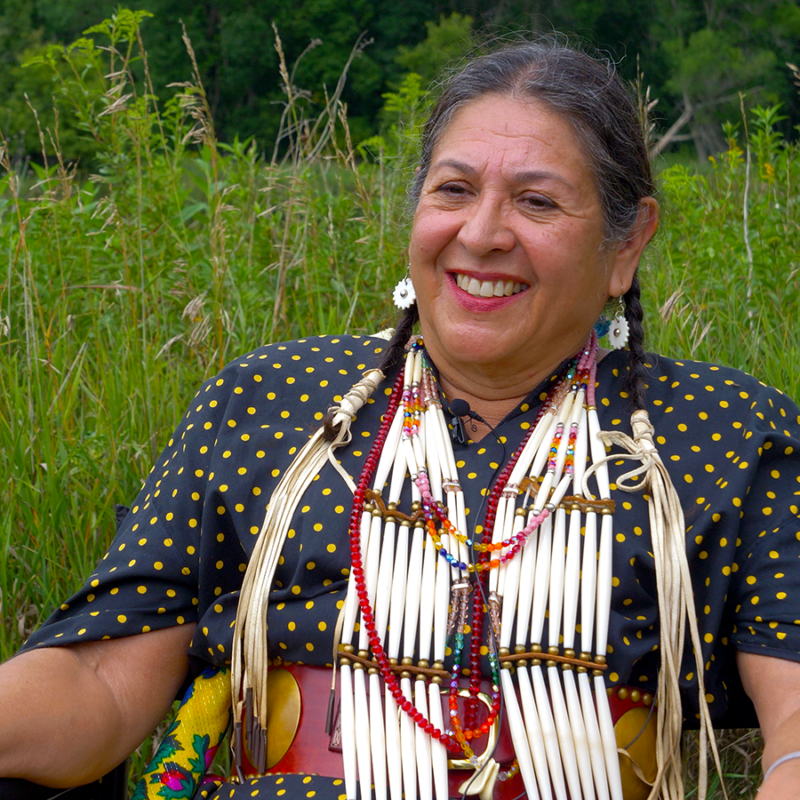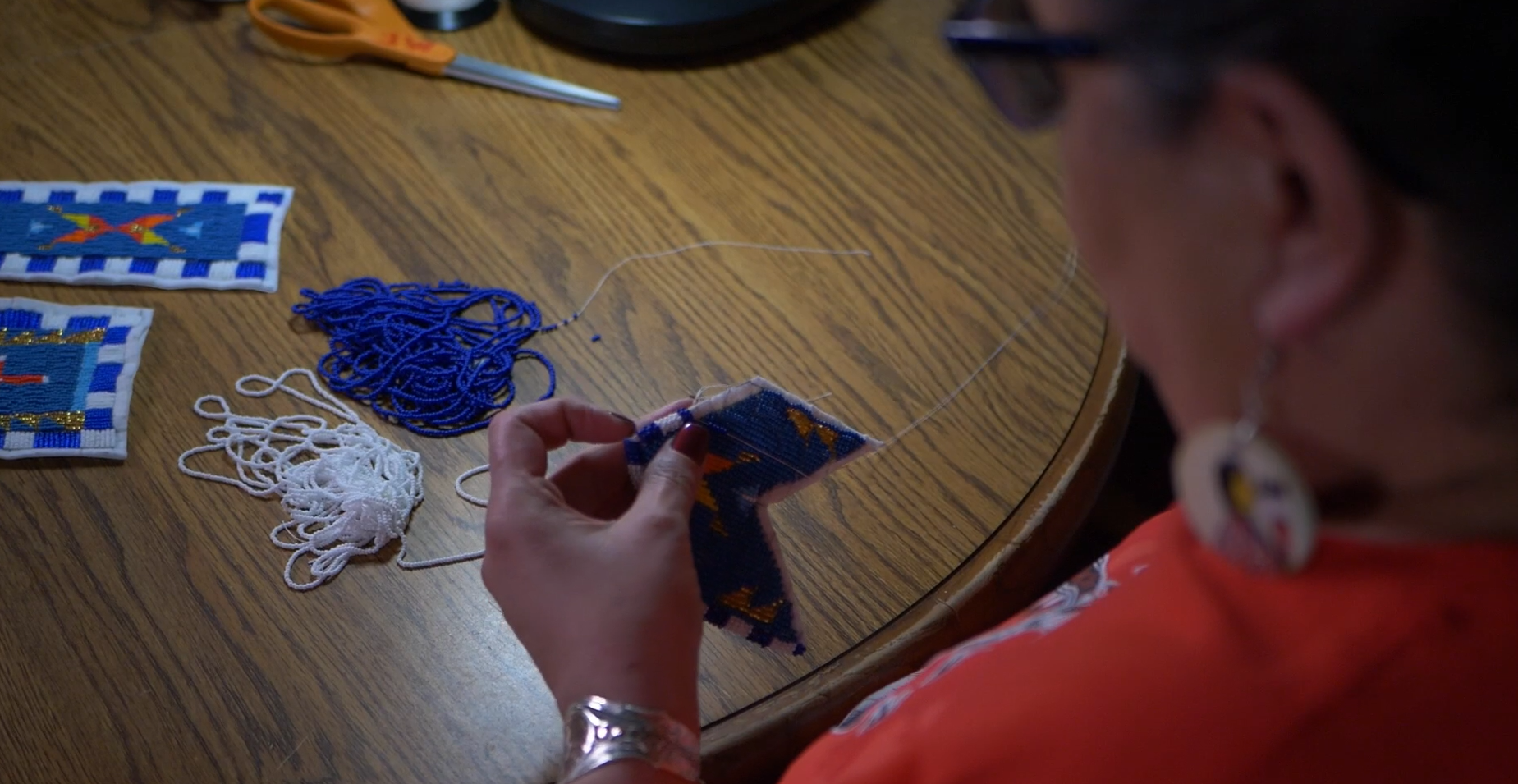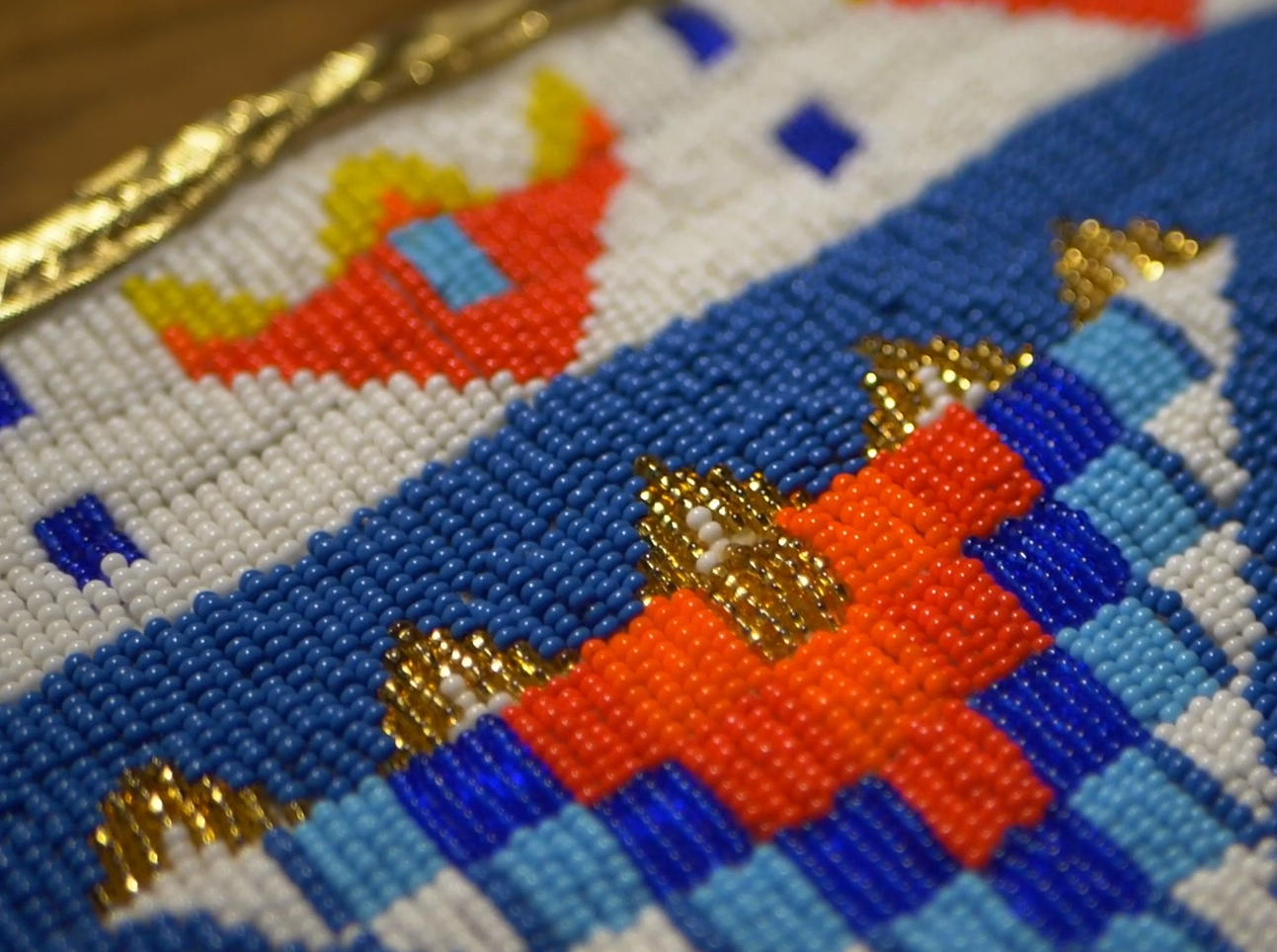Capturing Lakota and Dakota dress-making culture
Photo: Owned by Pioneer PBS
The Dakota word for dress is saksanica, and the documentary bearing its name delves into the relationship Lakota and Dakota people have with their land and how that connection to the Earth is reflected in the structure and design of the dress.
Created by award-winning filmmaker Leya Hale, Saksanica tells the story of dress-making culture within the Lakota and Dakota communities, and how knowledge of that skill survived over time. The documentary premiered in Sisseton, South Dakota, at the Omníčiye Tipi community center at Sisseton Wahpeton College in April of 2022.

“That ancient relationship with the Earth that Dakota people had – so they lived with it and took care of it – so those were the inspirations. Whether it’s breezy or in a storm it can be quite formidable, they paid attention to that as an aesthetic element. And so, it can be fringes at the end of a woman’s dress. Everything – it was influenced by the environment, the designs that were used. The style of dance.”
—Gabrielle Tateyuskanskan, Sisseton Wahpeton Dakota, Art Instructor at Sisseton Wahpeton College, in Saksanica
Sharing cultural knowledge through documentaries
Airing on Pioneer PBS in May of 2022, Saksanica is a shining example of the 2020-2023 Pioneer PBS Folk Arts and Cultures project. The project aims to increase the capacity of Pioneer PBS to produce and distribute work that spreads the artistic skills and cultural knowledge of Nordic American folk arts and Native American arts and cultures in the Upper Midwest. To date, more than 14 films have been produced, reaching over 200,000 people, two of which have received Upper Midwest Emmy® awards.
“To make these items you are expressing pride – pride in who you are and pride in who you come from. So, to put all of that much work into it, you’re just investing a whole lot in yourself. That’s a lot of self-love.” – Pejuta Haka Red Eagle, Oglala Lakota, Wahpekute, Wahpetunwan Dakota, in Saksanica
With MACP support, Pioneer PBS has engaged with three youth videographers and one established Native American producer to create this content. It also incorporated the expertise of producers and filmmakers deeply rooted in the Native community experience to lead the development and production of at least two of the documentaries.
“When you look at something, it speaks to you. If you make something, you’re speaking. That’s Creator speaking through you.”
— Gabrielle (Gaby) Strong, NDN Foundation Managing Director
Director and Producer Leya Hale is from the Sisseton Wahpeton Dakota and Diné Nations. Videographer and Production Assistant Tanner Peterson worked with Hale to locate historical footage and to capture scenes from contemporary Wacipi dances and the Minnesota River valley landscape that are woven into interviews throughout the half-hour documentary. Peterson has family ties to the Sisseton Wahpeton Dakota and is a citizen of Upper Sioux Community/Pezihutazizi Oyate.

Photo: Owned by Pioneer PBS

Margaret A. Cargill Philanthropies supports Folk Arts & Cultures and Native Arts & Cultures to be more deeply understood, more broadly recognized, and more widely practiced.
The Arts & Cultures work is driven by concern that the lack of intergenerational transfer of artistic skill and cultural knowledge threatens the continuity of folk arts and cultures. MACP aims to address this problem by supporting the work of a select number of organizations that in turn support communities of artistic practice in various regions of the United States as well as British Columbia.
MACP’s support for Pioneer PBS aims to bring greater awareness of Scandinavian folk arts and cultures and Native arts and cultures in the Upper Midwest region through the production and distribution of high-quality media content, accompanying educational materials, and celebratory public gatherings.
SAKSANICA: Award-winning filmmaker Leya Hale traces the traditions underlying the dress-making.